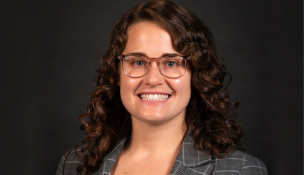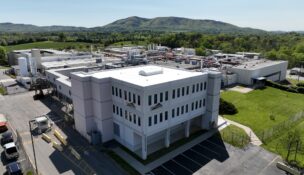Fairfax County developer John ‘Til’ Hazel Jr. dies at age 91
Hazel was force behind 1960s development of Tysons Corner
Fairfax County developer John ‘Til’ Hazel Jr. dies at age 91
Hazel was force behind 1960s development of Tysons Corner

John T. “Til” Hazel Jr., a major force behind the development of Tysons Corner and several planned communities in Fairfax County in the late 20th century, as well as a significant booster of George Mason University, died Wednesday at age 91.
An Arlington native, Hazel was also an attorney and graduated from Harvard University and Harvard Law School. After graduation, he joined the U.S. Army’s Judge Advocate General’s Corps. When Hazel returned to the region, he worked as a private-sector attorney in Arlington. Fairfax County, where his family owned a farm, was then a rural outpost of Washington, with 150,000 residents and a “significant number of dairy farms,” he recalled in a 2017 video celebrating his career by the Virginia Law Foundation, of which he was a 1988 fellow.
In the 1950s, Hazel began promoting commercial and residential growth in Fairfax County, and specialized in real estate and property law. One of his early projects involved acquiring land for the future Capital Beltway in the area, providing an impetus for growth.
“I became one of two lawyers that tried contested cases in the courts,” Hazel says in the video. “So, I began to get very much involved with land use, zoning, land regulations. That was, of course, the business of Fairfax County in those years, because the county was just developing and I mostly did land use law of various kinds.”
Defeating “no-growth” opponents in Fairfax was one of the most meaningful parts of Hazel’s career, he said in the video, noting how different the county would be today had foes to development prevailed. Fairfax is now the state’s most populous county, with more than 1.2 million residents, as well as a hotbed for corporate headquarters, no doubt with growth that had an early assist from Hazel.
In 1962, working with developer Gerald T. Halpin, Hazel got county supervisors to allow rezoning on more than 100 acres in Tysons. He also was instrumental in bringing in Tysons Corner Center and the Tysons II mixed-use development.
In the 1970s, Hazel pivoted from law to development and formed the Hazel/Peterson Cos. with Fairfax developer Milton V. Peterson, who died last year at age 85. The two developed several planned communities, including Burke Centre, Franklin Farm, Fairfax Station, Fair Lakes and Centre Ridge. Often, Hazel worked closely with his late brother, William A. Hazel, who owned the Chantilly-based construction firm William A. Hazel Inc. William Hazel died in 2012 at the age of 77.
“Fairfax County and Northern Virginia lost a visionary today,” Victor Hoskins, president and CEO of the Fairfax County Economic Development Authority, said. “Til Hazel was as important as anyone in seeing Fairfax County’s potential to become one of the preeminent locations in the nation for corporate headquarters — and in reminding those who followed about continuing to invest in the assets that business needs in order to be successful here.”
Hazel’s son Richard M. “Dick” Hazel said Wednesday that his father was a hard worker and spoke openly about his thoughts and ambitions for Northern Virginia.
“The things he supported were so obvious,” Dick Hazel said, noting that higher education and prosperity were among his major priorities for the region. His father’s chief advice, his son said, was always, “Keep doing, keep going.”
In his spare time, Hazel enjoyed raising cattle on his Fauquier County farm, which was a lifelong occupation. “He characterized himself as a farmer,” Dick Hazel added. “He was a really good guy. He was widely, widely read, and really loved [Winston] Churchill. I think he had a great admiration of that driving spirit.”
On the philanthropic side, Hazel was a strong supporter of George Mason beginning in the 1950s, when the Fairfax County university was a branch of the University of Virginia. He was instrumental in purchasing land for its main campus in Fairfax and was on GMU’s Board of Visitors from 1972 to 1983, serving as rector for different periods during that era. He also served on the GMU Foundation’s board for 32 years and was a force behind the university’s establishment of a law school in 1979. He was also a co-founder of the Virginia Business Higher Education Council.
Dan Clemente, another developer who has been instrumental in molding Northern Virginia, met Hazel when he was trying to grow George Mason. Hazel, he said, recognized the power of what bringing affordable, public higher education could mean in the fledgling region.
“He saw it,” Clemente said in an interview with Virginia Business. “He was brilliant with it, and everything [that] happened going forward was something from him.”
Hazel was married to Marion “Jinx” Engle until her death in 1995, and his second wife, Anne Barnett Merrill, died in December 2021, according to The Washington Post. Survivors include four children and two stepsons, as well as grandchildren and great-grandchildren.
l
















